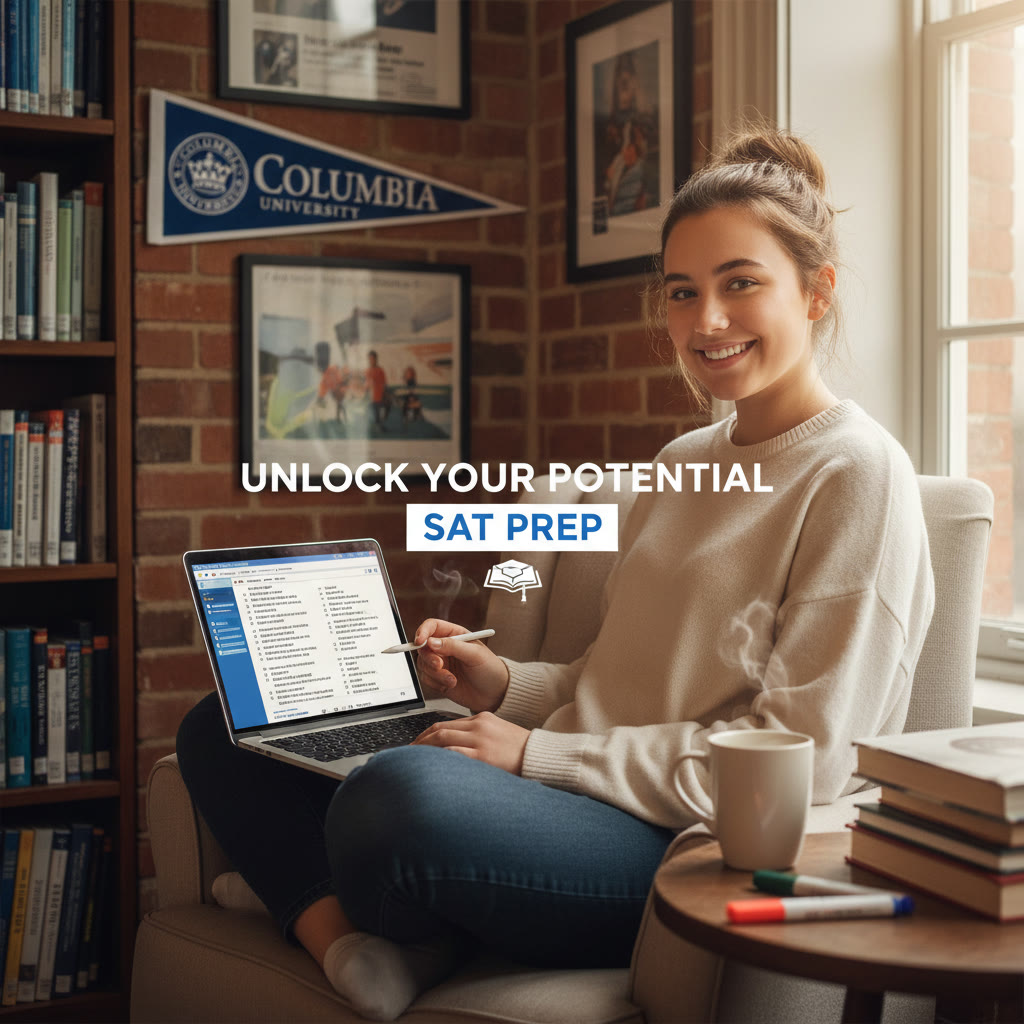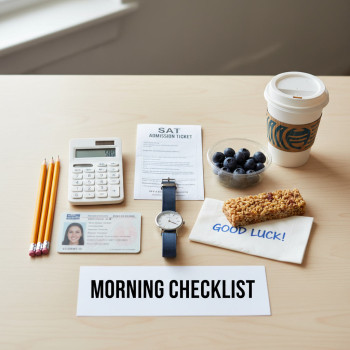Why this matters: SATs and Columbia in plain English
Columbia University is one of the most selective colleges in the world, and while admissions considers the whole student—grades, essays, recommendations, extracurriculars—SAT scores still play an important role for applicants who choose to submit them. In the last several admissions cycles many top schools, including Columbia, shifted policies (test-optional, test-flexible, or test-required) as they evaluated how best to evaluate applicants after the pandemic. What hasn’t changed is this: a competitive SAT score can strengthen an application, especially when other elements of the file are tightly clustered.

Quick snapshot: What Columbia typically looks like in SAT numbers
When families ask “What score should I aim for?” it helps to translate the expectation into a clear target. Columbia’s admitted-student SAT range (the middle 50%) historically sits very high compared with national averages. For students applying to Columbia College or Columbia Engineering, aiming near the top of the reported middle 50% puts you in a competitive spot. For Columbia’s School of General Studies, the published ranges look somewhat different because that school serves a more non-traditional applicant population.
Typical SAT targets (rounded and illustrative)
| School within Columbia | Middle 50% SAT Range (Competitive) | Aim-for Target (Safe-competitive) |
|---|---|---|
| Columbia College & Columbia Engineering | About 1510–1560 | 1550+ |
| School of General Studies | About 1470–1530 | 1500+ |
| If test-optional or not submitting | N/A — focus on GPA, course rigor, essays | Strengthen other application components |
These numbers are a practical shorthand—not an absolute cutoff. Admissions is holistic: a slightly lower score can be offset by extraordinary accomplishments, context, or a compelling narrative in your application.
Understanding Columbia’s test policy: test-optional vs. test-considered
The headline many families remember is “test-optional,” but that phrase hides nuance. “Test-optional” means applicants may choose whether to send scores; it doesn’t mean scores are irrelevant. Columbia, like many selective institutions, will evaluate submitted scores in context. If you submit, expect that scores will be considered alongside GPA, curriculum, essays, recommendations, and demonstrated interest in your field.
How to decide whether to submit SAT scores
- If your SAT is near or above Columbia’s middle 50% (e.g., mid-1500s), submit it — it can bolster your file.
- If your SAT is significantly below the range but other parts of your application are stellar (unique research, art portfolio, leadership, or exceptional talent), consider leaving it out and making your strengths prominent elsewhere.
- If you’re on the borderline, think strategically: would a higher SAT (after focused prep) substantially strengthen your chances? If yes, plan to retest and submit your best score.
- Remember Score Choice: you can typically choose which test dates to send, but some scholarships or programs require all scores—check specifics for any special programs you pursue.
Breakdown of the Digital SAT and what Columbia admissions will see
The Digital SAT changed format and pacing, emphasizing reasoning, data interpretation, and clearer question types. For Columbia applicants who submit scores, the admissions team will review your total score and section-level performance. In practical terms, they want evidence of readiness for Columbia’s rigorous curriculum—strong quantitative ability for engineers and math/science majors, and strong evidence-based reading and writing for humanities and social science majors.
How to read your Digital SAT results strategically
- Look at section balance: a 760 Math / 800 Evidence-Based Reading & Writing (EBRW) sends a different signal than 600/960. Balanced high performance is often more persuasive.
- Use superscore policies carefully: confirm whether Columbia superscores (combines best section scores across test dates) and plan accordingly.
- Pair scores with coursework: strong APs or IB scores in relevant subjects can complement the SAT snapshot.
What admissions officers are really looking for
Admissions officers at Columbia are trying to assemble a class that will thrive academically, contribute intellectually, and add diverse perspectives and talents. An SAT score helps them answer one question: can this applicant handle rigorous academic work? But Columbia also asks: does this student bring curiosity, leadership, and a voice that will enrich the campus?
Concrete things that strengthen an application (beyond raw SAT numbers)
- Challenging course load: AP, IB, or honors classes with strong grades.
- Achievements and sustained leadership in a few areas rather than superficial participation in many.
- Excellent teacher recommendations that contextualize academic performance.
- Essays that reveal personality, intellectual interests, and fit with Columbia’s offerings (Core Curriculum, research opportunities, NYC resources).
- For Columbia Engineering applicants: strong math and science coursework plus projects or research experience.
Timeline and concrete test plan for juniors and seniors
Timing matters. If you’re a junior or early senior plotting the SAT roadmap, here’s a realistic schedule that balances schoolwork, extracurriculars, and test prep.
| When | Action | Goal |
|---|---|---|
| Junior spring | Take a full-length practice Digital SAT under timed conditions | Establish baseline; identify weak areas |
| Junior summer | Create a 6–10 week prep plan (content review + practice) | Improve fundamentals; complete at least one full practice test every 2 weeks |
| Senior fall (by Oct/Nov) | Take official Digital SAT; submit if score is competitive | Get an official score to include with Early Decision/Action if applying |
| Senior winter (Dec–Jan) | Retest if needed; ramp up on weak sections | Submit highest score by application deadlines |
Practical tips for test day and score submission
- Register early for the Digital SAT date you choose and confirm materials needed for test day.
- Do a dress rehearsal: two practice tests under test-day timing and conditions (no phone, exact breaks).
- Use Score Choice thoughtfully—send the best overall representation of your ability.
- If applying Early Decision, aim to have a strong score ready by the early deadline; a late high score may not be considered in early cycles.
Study strategies that actually move the needle
Effective SAT prep isn’t about cramming; it’s about targeted deliberate practice. Here are strategies that produce measurable improvement.
Three focused habits to build
- Analyze mistakes: for every practice test, log every error and categorize it (content gap, careless, timing). Then design short drills to fix the most frequent categories.
- Small daily doses: 30–60 minutes of deliberate practice focused on one skill (e.g., algebra fundamentals, command of evidence) beats marathon sessions that burn out attention.
- Simulate conditions weekly: full-length practice tests under timed conditions to build pacing and stamina.
For students who need structure, personalized options like 1-on-1 tutoring can accelerate progress. Sparkl’s personalized tutoring, for example, offers tailored study plans, expert tutors, and AI-driven insights to highlight high-impact improvements—helpful for busy students balancing rigorous coursework.
How to present scores in your Columbia application
If you decide to submit SAT scores, present them as part of an application that emphasizes academic rigor, intellectual curiosity, and fit with Columbia’s academic ecosystem.
Checklist for score submission
- Confirm whether you’re applying to Columbia College, Columbia Engineering, or School of General Studies and note any school-specific guidance.
- Check the deadline calendar—early deadlines often mean earlier test dates are preferred.
- Decide on Score Choice or send all scores based on your comfort and the advice of your counselor.
- If using the Common App, make sure official scores are sent from the College Board where required.
Real-world examples — three applicant scenarios
Stories help translate advice into action. Below are simplified, realistic examples to illustrate how SAT decisions interact with the rest of the application.
Example 1: Strong scores, strong course load
Alex earned a 1550 SAT, AP Calculus BC and AP Physics with 5s, and leadership in math research club. Submitting scores reinforces a clear academic narrative. Alex’s application highlights classroom excellence, research, and intellectual curiosity—this is exactly the profile Columbia seeks.
Example 2: Lower SAT but unique profile
Priya scored 1380 but has a national-level achievement in performing arts and a portfolio showing exceptional talent. If she applies to Columbia with essays that articulate how she’ll contribute to Columbia’s arts community, omitting the SAT can be a reasonable strategy; the application should amplify demonstrable excellence in other avenues.
Example 3: Borderline SAT, potential to improve
Marcus scored 1480 as a junior and is heading into a busy senior year with demanding IB courses. He chooses focused tutoring over the summer and raises his score to 1530 on a senior fall sitting—this improvement makes his application more competitive and demonstrates upward academic momentum.
Resources and tools worth using
Free practice resources (official practice on Khan Academy paired with College Board materials) are invaluable. But when a student needs structure and acceleration, personalized tutoring—especially 1-on-1 guidance that produces a tailored study plan—can be transformative. Sparkl’s model of expert tutors plus data-driven insights helps many students prioritize the right content and pacing for maximum score gain while balancing school commitments.
Common mistakes families make and how to avoid them
- Waiting too long to test: don’t leave your first official SAT until senior fall if you hope to apply Early Decision.
- Overfocusing on one practice test score: look at trends across multiple official-style tests, not a single high or low result.
- Ignoring balance: a very high math score with poor evidence-based reading can raise questions about writing and synthesis skills.
- Submitting a score that’s below your school average: if your SAT is substantially lower than your GPA and coursework, consider withholding and explaining your academic strengths elsewhere.
Putting it together: a recommended action plan
Follow this simple roadmap to create a calm, strategic approach to the SAT and a stronger Columbia application:
- Baseline: Take a timed diagnostic practice Digital SAT this spring.
- Plan: Build a 6–12 week prep block focusing on content gaps revealed by the diagnostic.
- Practice: Do weekly timed sections and full-length tests every 2–3 weeks.
- Evaluate: If your progress plateaus, bring in targeted help—1-on-1 tutoring or a short intensive course to break through specific weaknesses.
- Decide: After one or two official scores, choose whether to submit based on how your score compares to Columbia’s competitive range and the strength of the rest of your application.
Final thoughts — the bigger picture
Applying to Columbia is emotional for many students and families because it represents not just an Ivy label but a chance to study in a uniquely stimulating environment. Whether you submit SAT scores or not, aim to tell a coherent story: academic readiness, intellectual curiosity, and a clear sense of how Columbia fits into your future. That clarity—more than any single test result—resonates with admissions readers.
If test prep feels overwhelming, remember that tailored support exists to make the process efficient and humane. Personalized tutoring—like Sparkl’s focused 1-on-1 programs with tailored study plans and expert guidance—can help you maximize scores without sacrificing wellbeing or school performance. Use those resources when they align with your goals and budget.
Take a breath, make a plan, and approach the SAT as one way to show your readiness for Columbia’s challenge. With smart preparation, honest decisions about whether to submit scores, and an application that highlights who you are beyond numbers, you’ll put yourself in the strongest possible position.

If you want next steps
Start with a timed practice Digital SAT this week, list your school deadlines (early vs. regular), and map two potential test dates. If you’d like, build a short plan for the next two months and consider a diagnostic tutoring session to see whether focused 1-on-1 coaching could shave weeks off your prep timeline.
Good luck—Columbia is selective, but it’s not random. With clarity, practice, and a strategy that plays to your strengths, you’ll give your application the best possible chance.















No Comments
Leave a comment Cancel